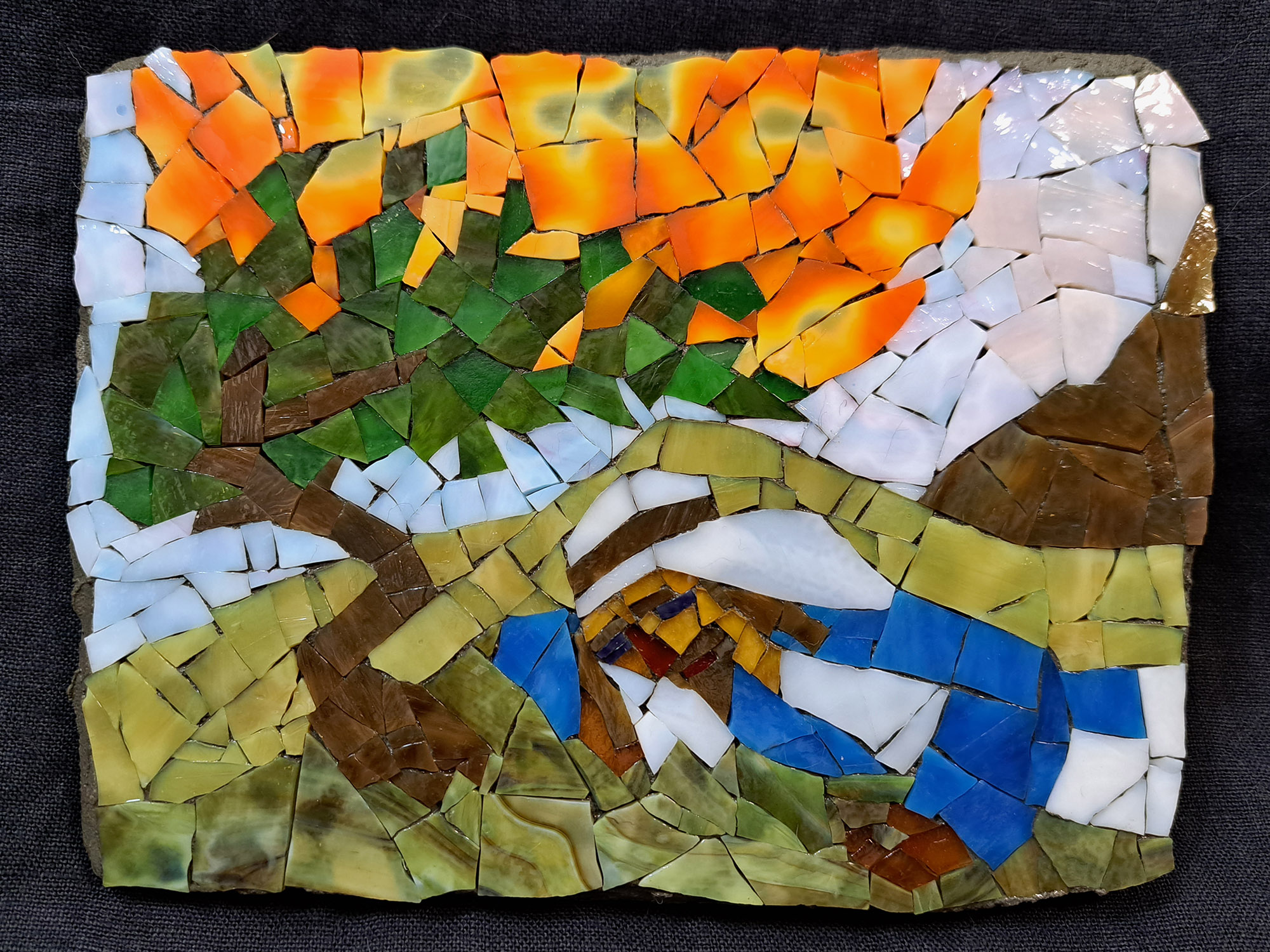Tag: outdoor mosaic
-
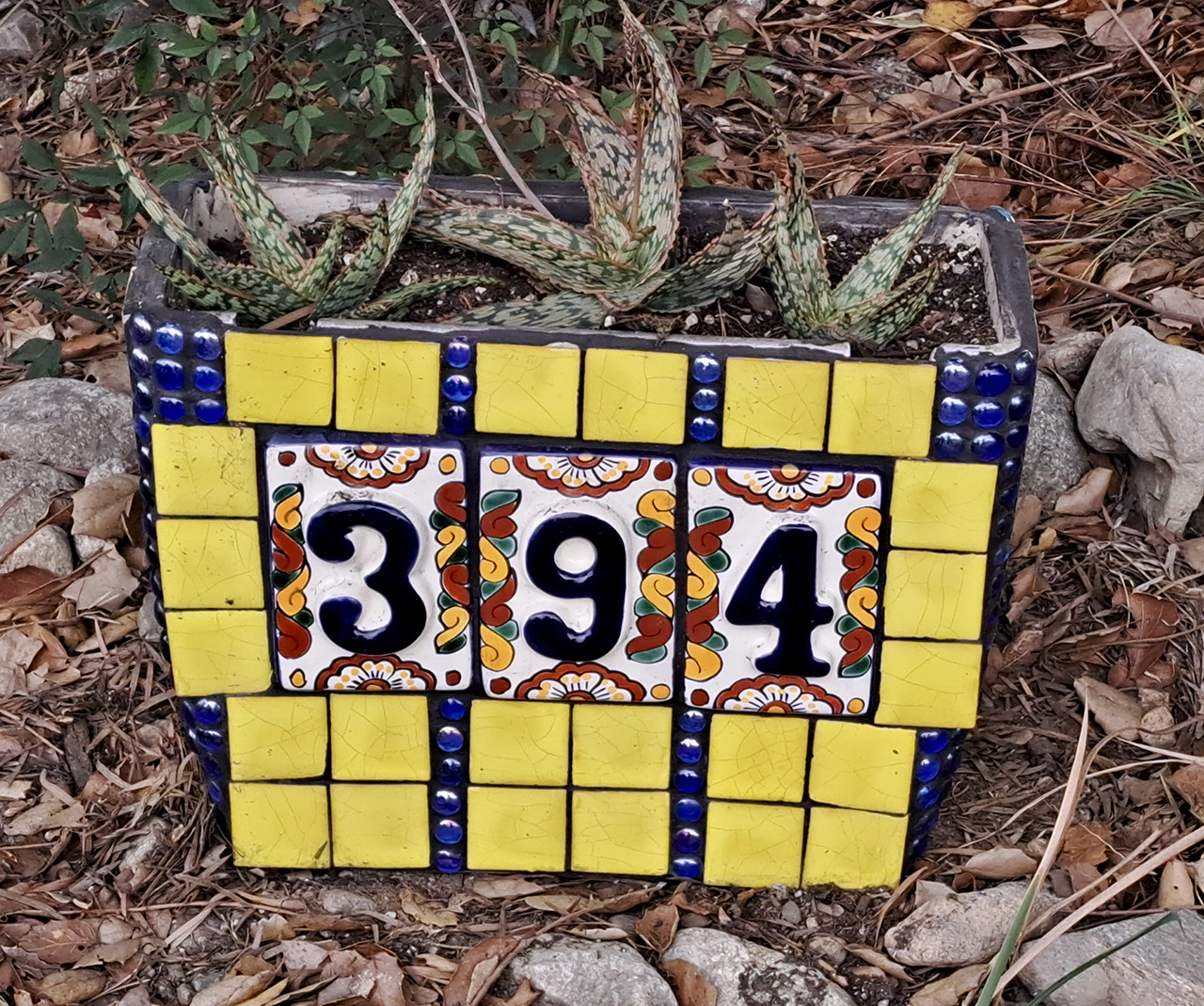
Toilet Tank Mosaic Planters
A significant part of the ethos of modern mosaic is to make use of damaged materials such as the broken dinnerware used in pique assiette mosaic. These mixed-media mosaics are intrinsically interesting because of their eclectic use of found objects: ceramic figurines, fossils, marbles, seashells, etc. Artist Debbie Logan has taken this one step further…
-
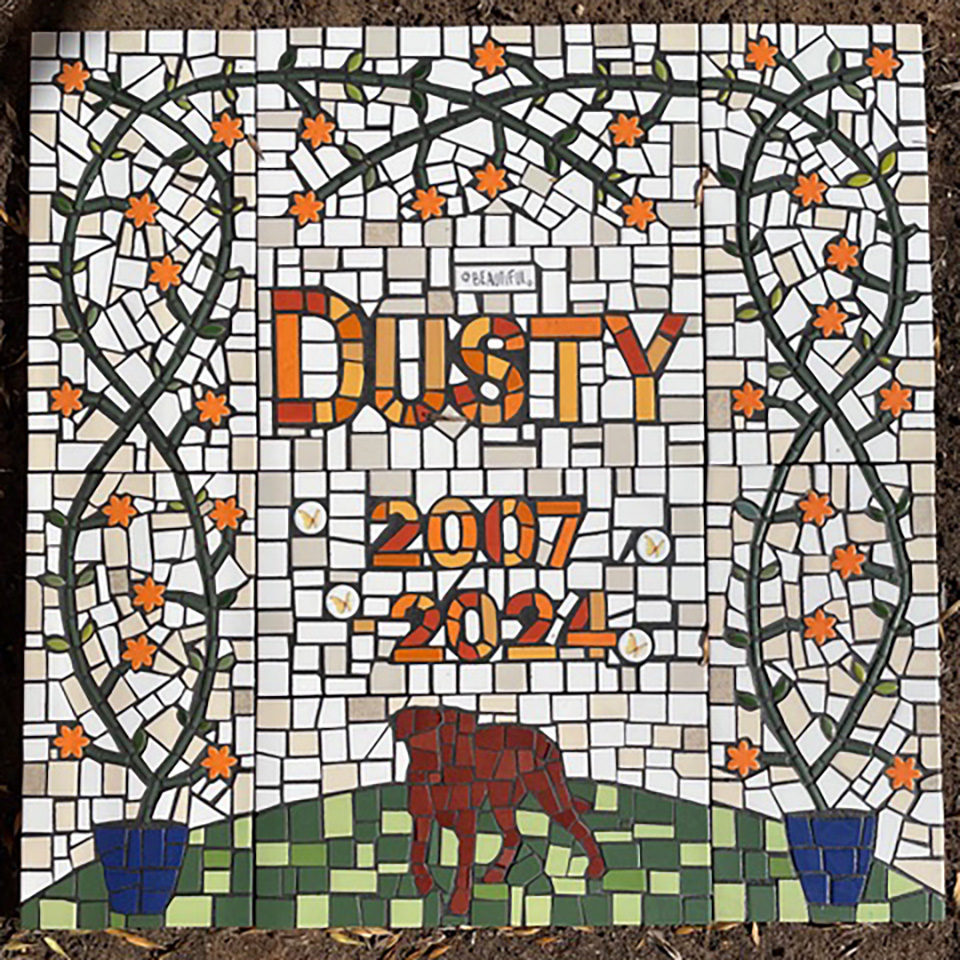
Pet Memorial Mosaic: Dusty’s Rest
Artist Sue Williams made a memorial mosaic for her recently-departed companion Dusty, and I wanted to share it with you for several reasons. The first reason is that Sue made the mosaic in sections on concrete pavers, which allowed her to make the mosaic in manageable pieces indoors. This mosaic is also worthy of note…
-
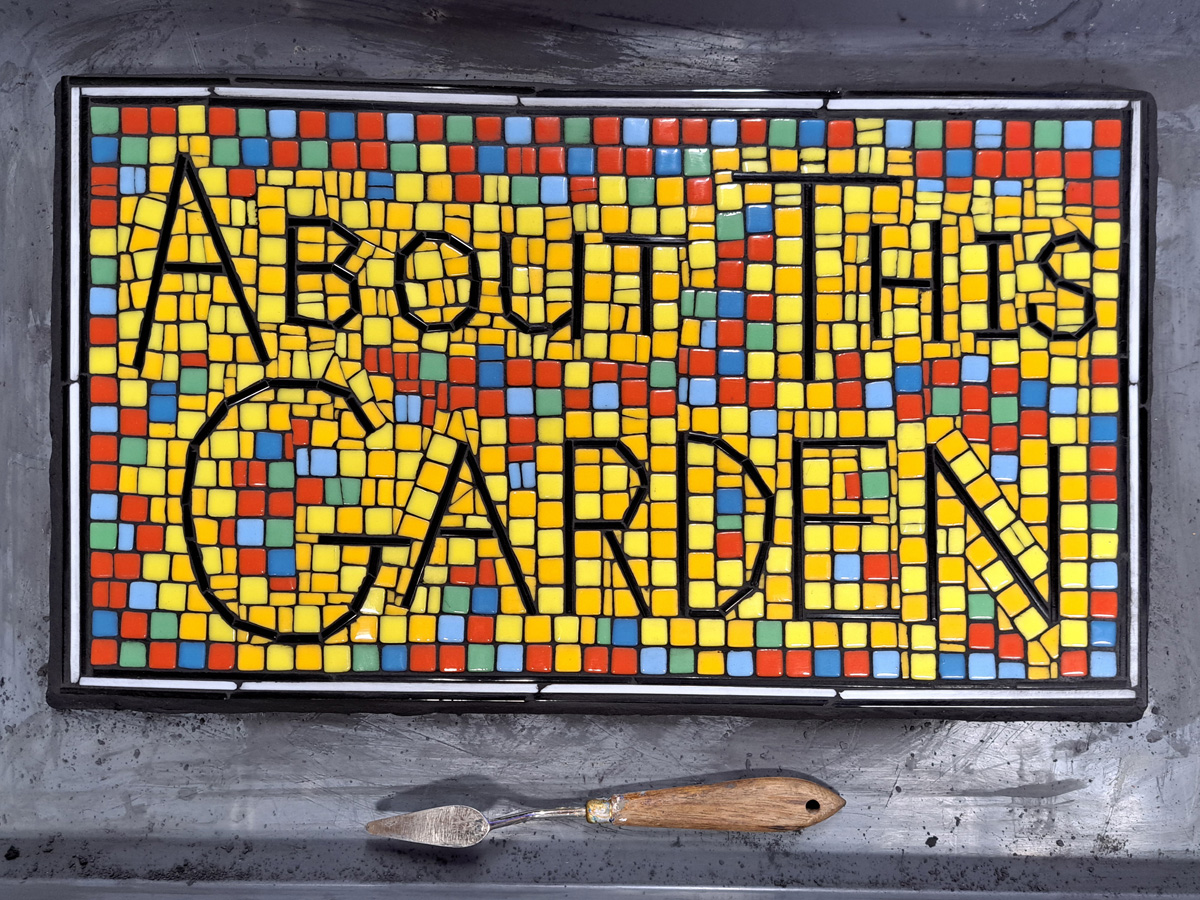
Mounting and Grouting Mosaic Garden Sign
The backer used for this project was a reinforced mortar stone, and thinset mortar was used to mount the glass mosaic, which was on Mosaic Mounting Tape. This mosaic garden sign is displayed under the QR-code mosaic so that passersby know the purpose of the QR code.
-
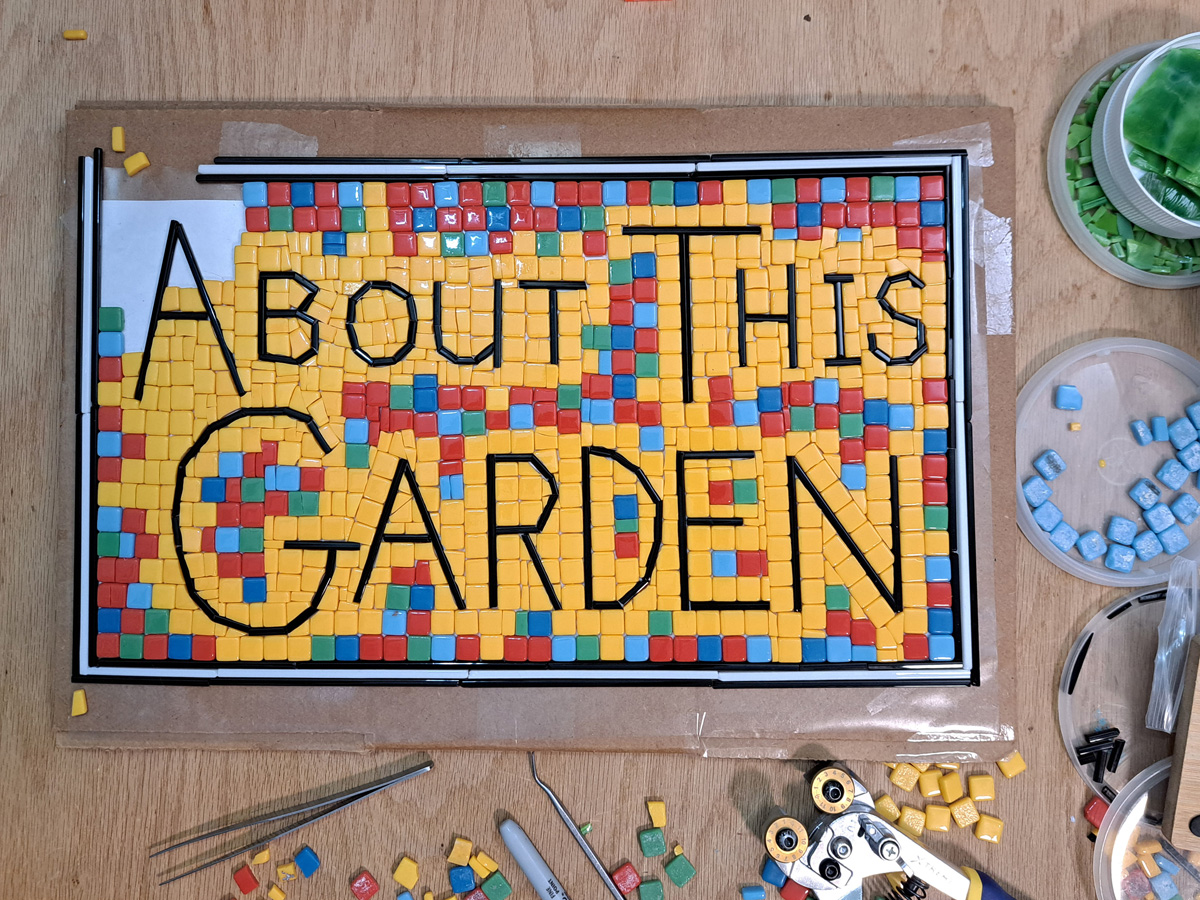
Mosaic Garden Sign
The Mosaic QR Code that I made for my garden needs some text with it because most people assume the sign is for some realtor or other commercial service. I decided to make a mosaic sign with the text “About This Garden” that could be displayed with the QR Code Mosaic.
-
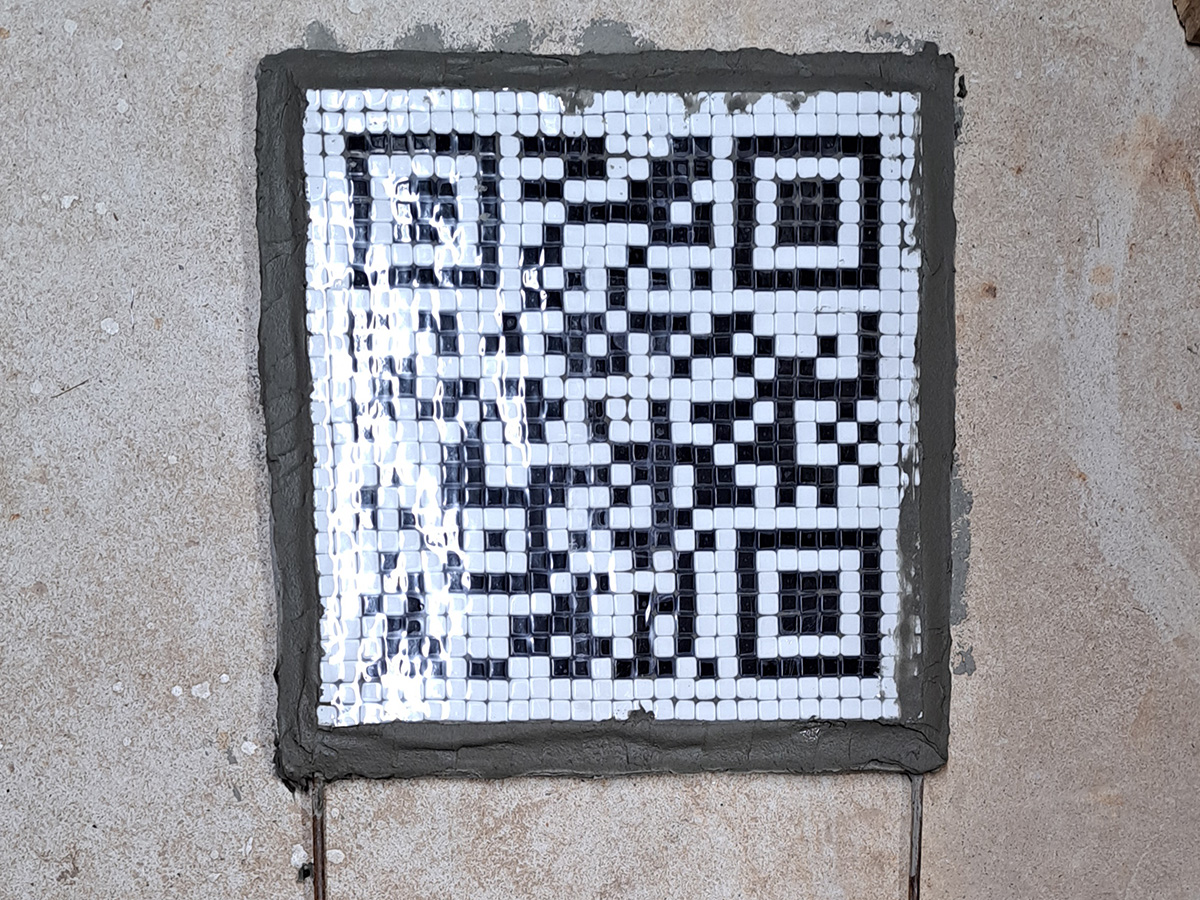
How to Mount a Gapless Mosaic in Thinset Mortar
I just made a video that shows how to mount a mosaic without a grout gap in a bed of thinset mortar. The project task used for the video was mounting the QR Code Mosaic to an outdoor sign backer that made from mortar and hardware cloth. The Video Here’s the video: video: How To…
-
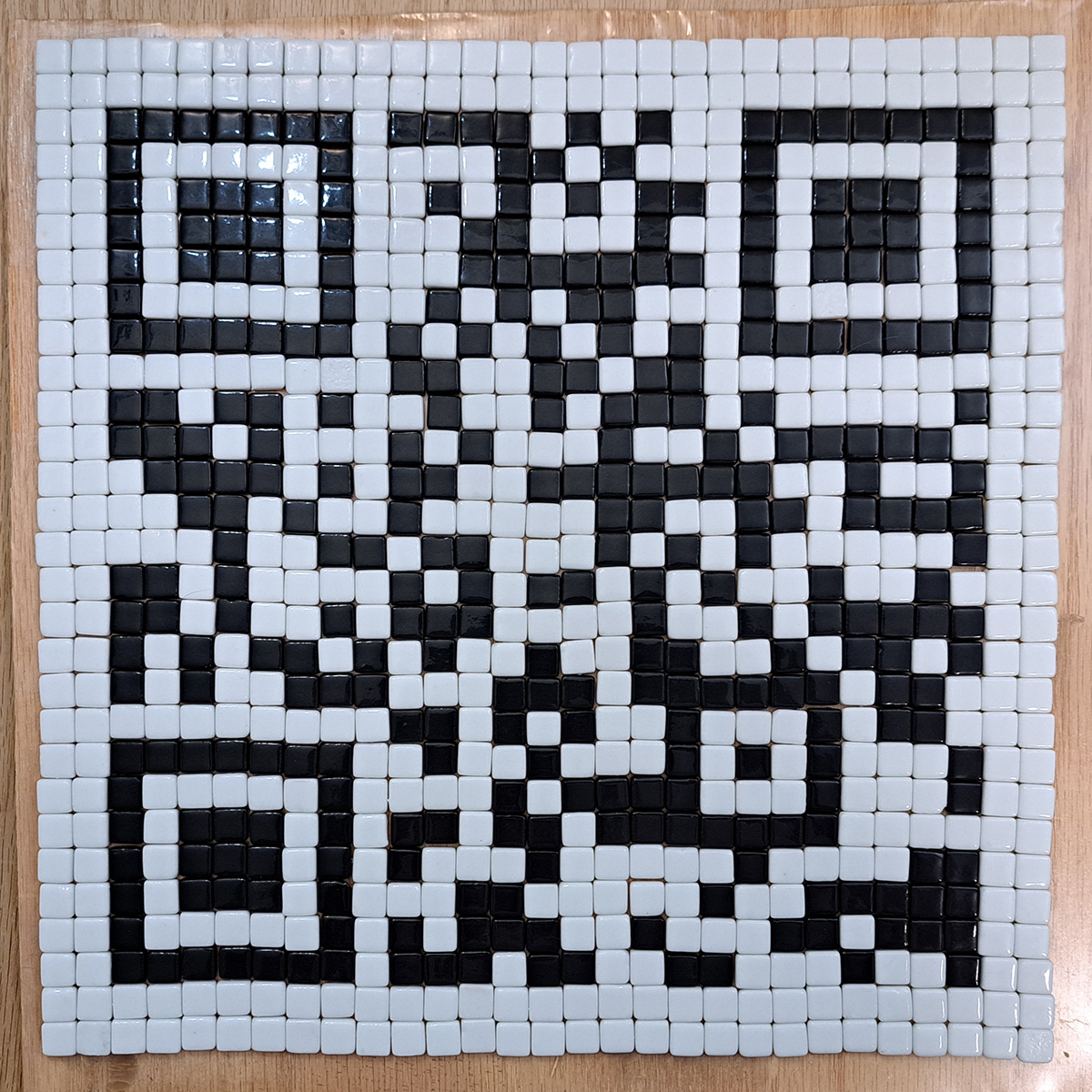
QR-Code Mosaic Sign
I needed to make a QR-code sign for my yard to tell my neighbors about the native pollinator meadow seedlings I have for them this year. I’ve converted my lawn into a native pollinator meadow, with all sorts of amazing results in terms of butterflies and hummingbirds and native ecology, and I am trying to…
-
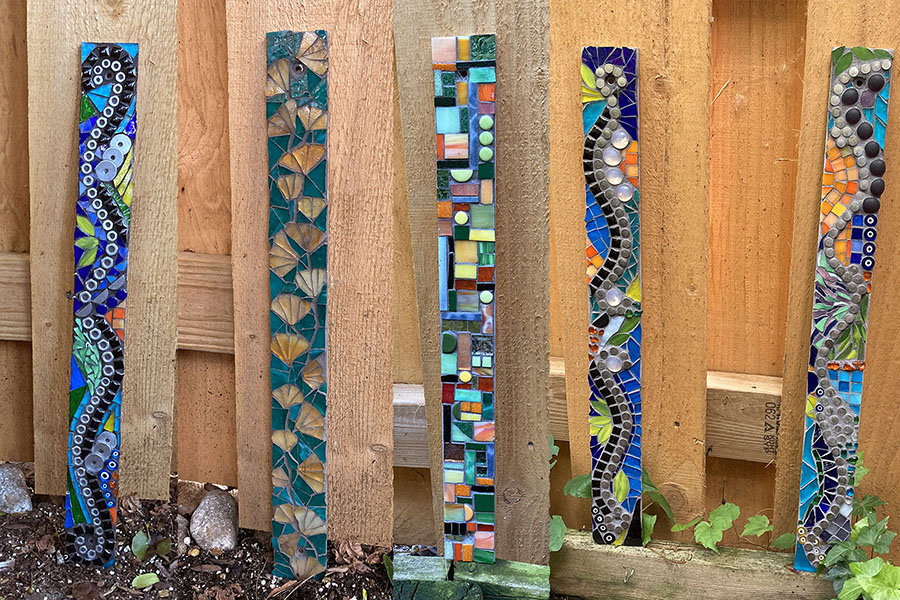
Mosaic Garden Art: Fun Group Projects
Artist Donna Stern recently completed a series of abstract mosaics that are exactly what I think of when someone emails asking for fun project ideas for a group day in the studio. Series of Smalls The first thing is that it is a series. More importantly, each element in the series is the same size…
-
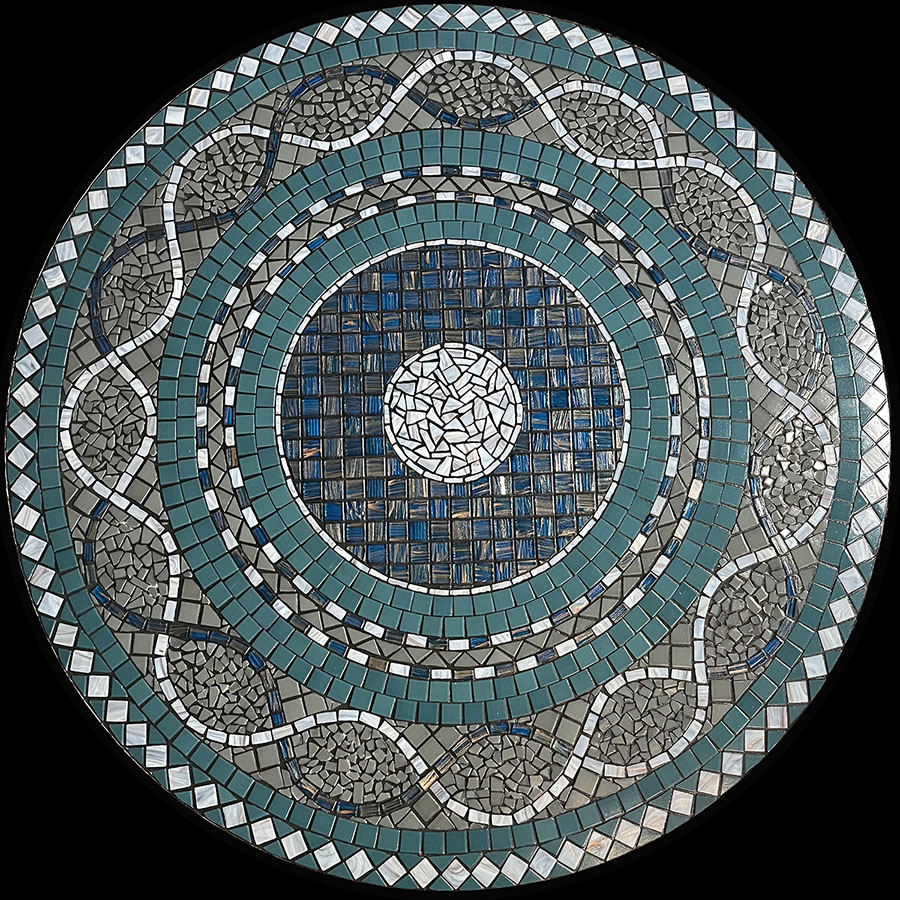
Harmonious Hues and Abstract Mosaic Art
Artist Zane Pahl’s recently completed mosaic patio table is a solid example of using harmonious hues in an abstract design. I have not written enough about this type of mosaic, especially considering its popularity and its accessibility. Zane’s mosaic is an interesting teaching example because the color scheme is about harmonious hues instead of contrasting…
-
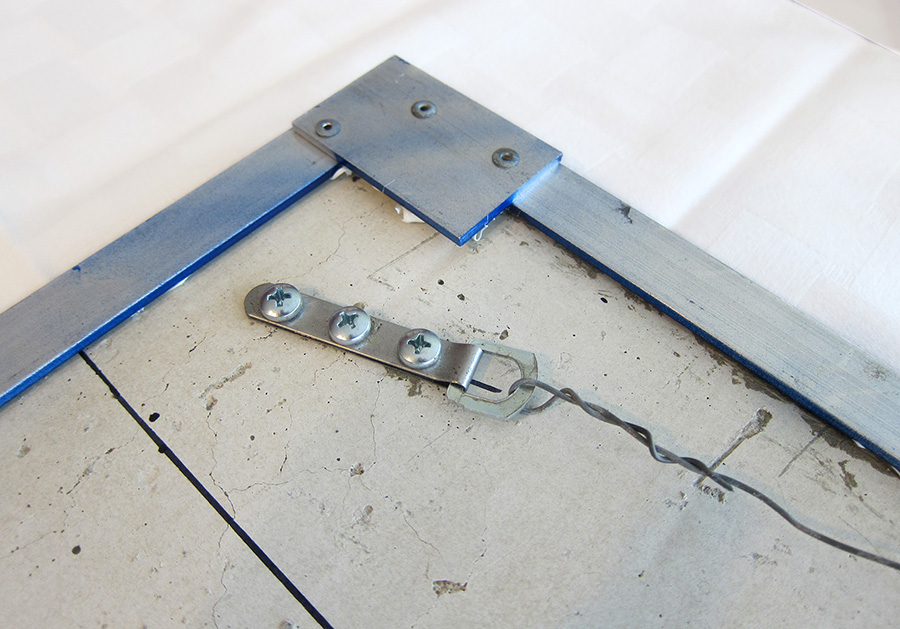
Framing and Hanging Exterior Mosaic Plaques
Artist Brad Srebnik’s mosaic street number plaque is worth taking a look at for several reasons. It has a harmonious color scheme with good warm-cool contrast, it’s tightly executed, and the numerals have crisp outlines and subtle curves in a distinct font style. If you are thinking about a project with mosaic numerals or letters…
-
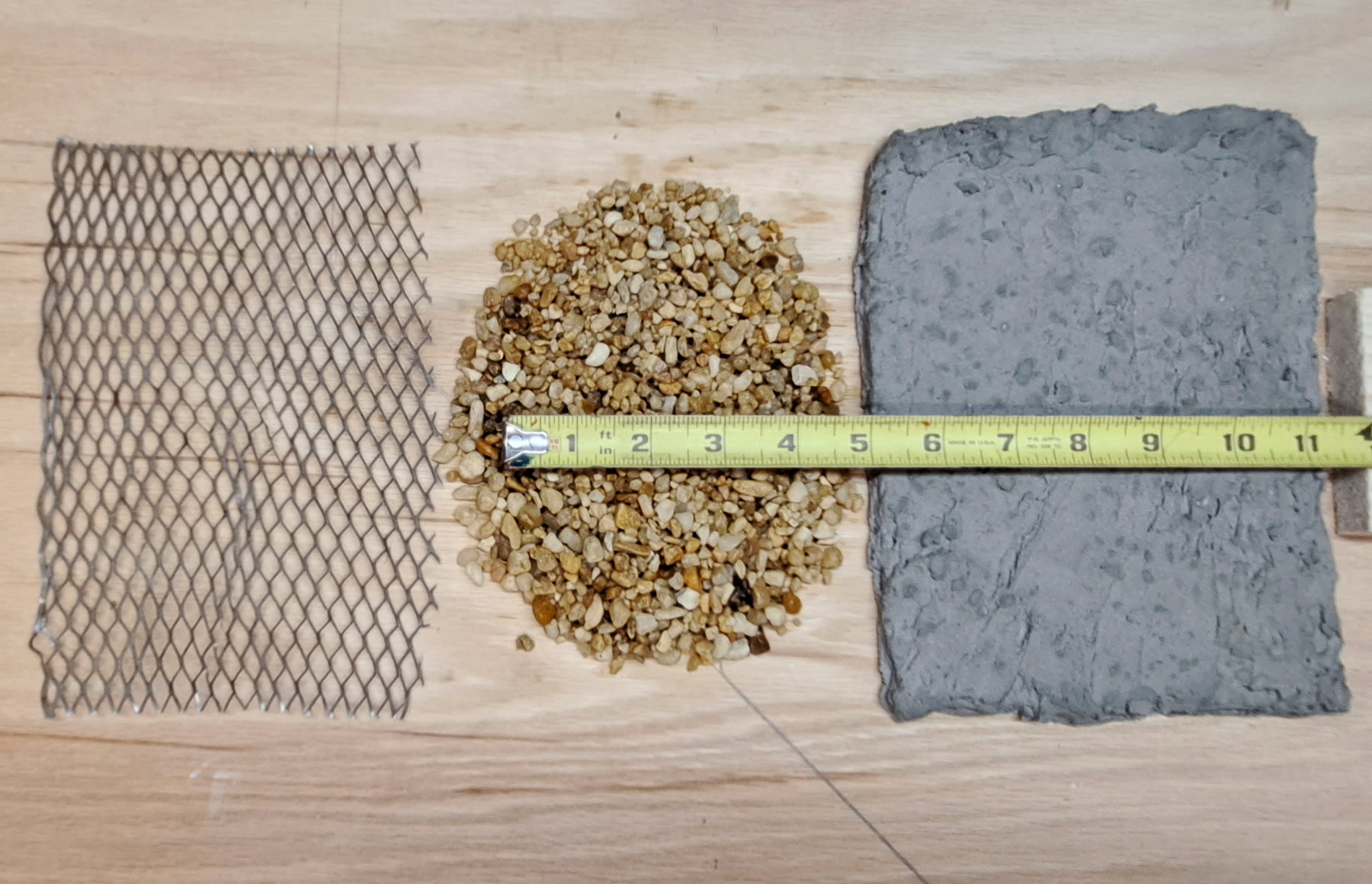
Tough Outdoor Mosaic Backer
The thinnest, toughest, most water-resistant backer I have been able to make is steel lath plastered with a “concrete” made from Versabond brand thinset mortar (or the equivalent Mapei product) and unsealed aquarium gravel. Regular pea gravel is too large for the lath, and so aquarium gravel is used instead. The aquarium gravel must be…
-
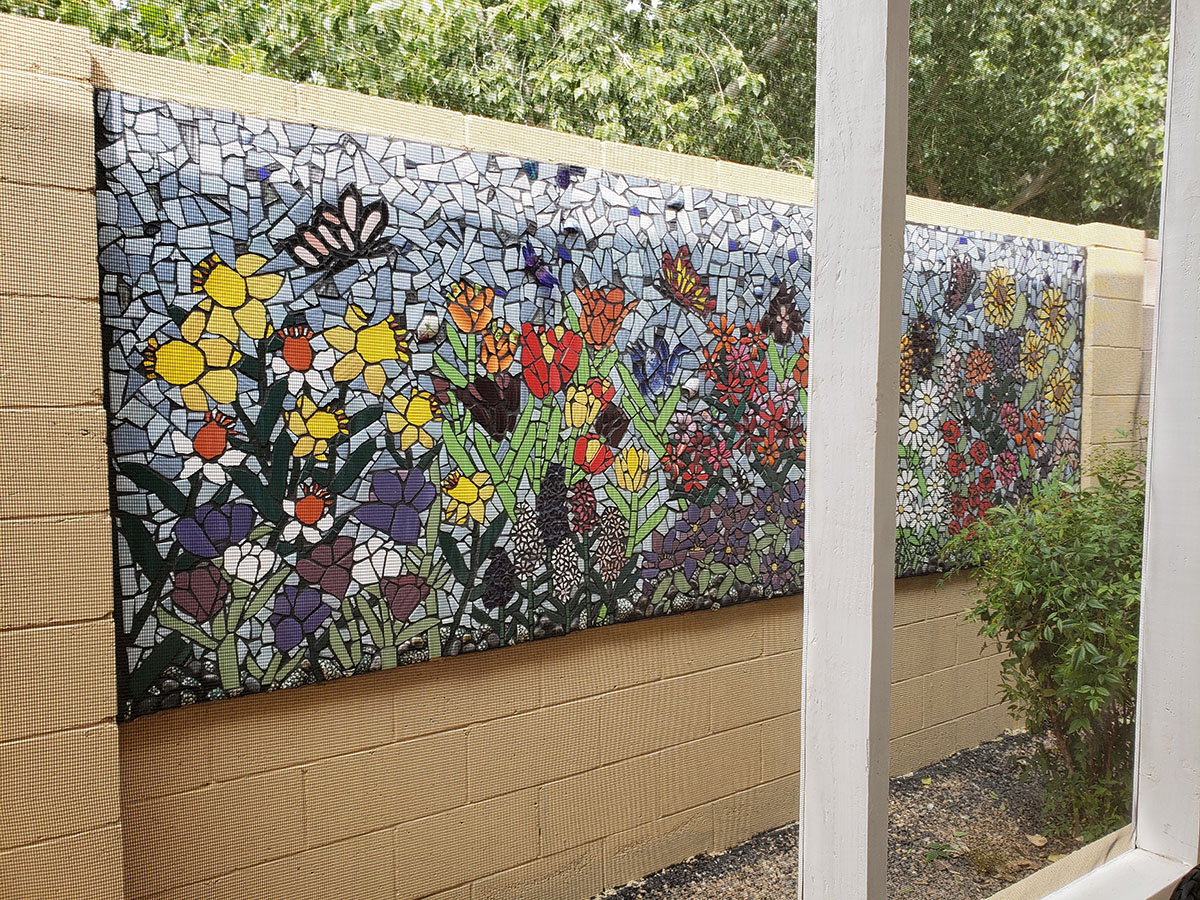
Mosaic Mural on Tile Backer Board
Artists Patricia Cream and Leah Mitchell recently completed an outdoor mosaic mural mounted on foam-core tile backer board, and they took excellent photos of the work in progress. Each major step in the process is shown, including the french-cleat hanging brackets used to mount the mosaic to the cinder-block wall. The mosaic mural is also…

